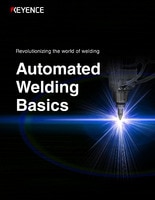Electrogas arc welding (EGW)
Electrogas arc welding (EGW) is used for welding vertical butt joints of products such as ship shell plates, bridges, storage tanks, and pressure vessels. This page introduces the features of electrogas arc welding (EGW), including the shielding gas, welding wire, and welding machine structure.
Electrogas arc welding (EGW) is a consumable-electrode-type welding method developed to enable vertical position welding of thick plates at high efficiency through stable penetration.
The shielding gas used for EGW is mostly CO2, but argon gas or gas mixes of argon and CO2, oxygen or helium are used as well. For the welding wire, flux-cored wires that form slag to create a nice bead are mostly used, but solid wires are also used in some cases.
The welding power supply is a DC constant-voltage characteristic power supply or DC constant-current (drooping) characteristic power supply.
The process encloses the weld pool with the end of the base material, a copper shoe and a fire-resistant backing and performs upward vertical position welding while preventing the dripping of molten metal. This allows the welding of a thick plate in one pass (one operation).
The advantages are a fast deposition rate through the use of a large current, high efficiency, and a relatively large margin for the groove accuracy because of small angular distortion.
EGW is used for welding vertical butt joints of products, such as ship's shell plates, bridges, storage tanks, and pressure vessels.





